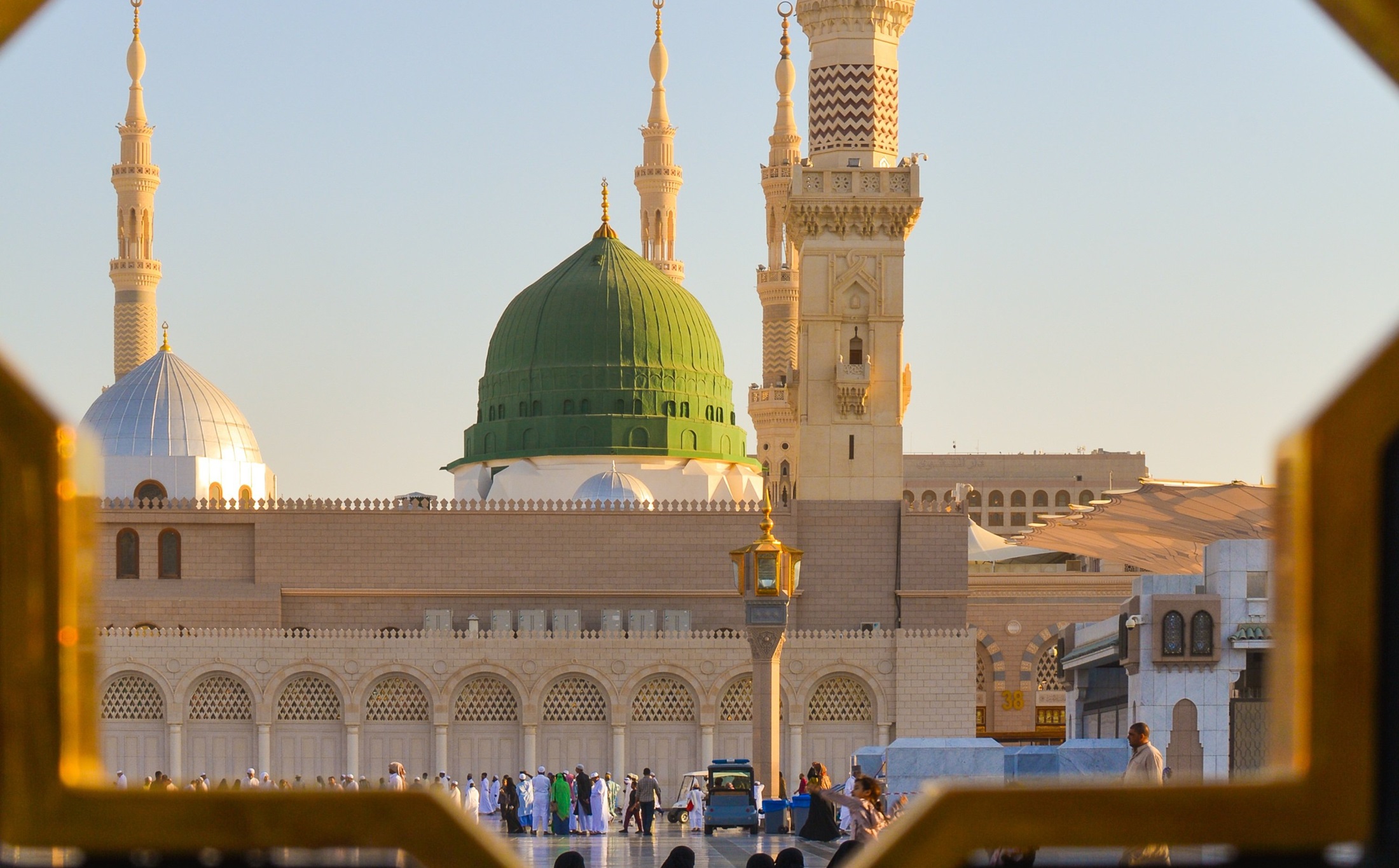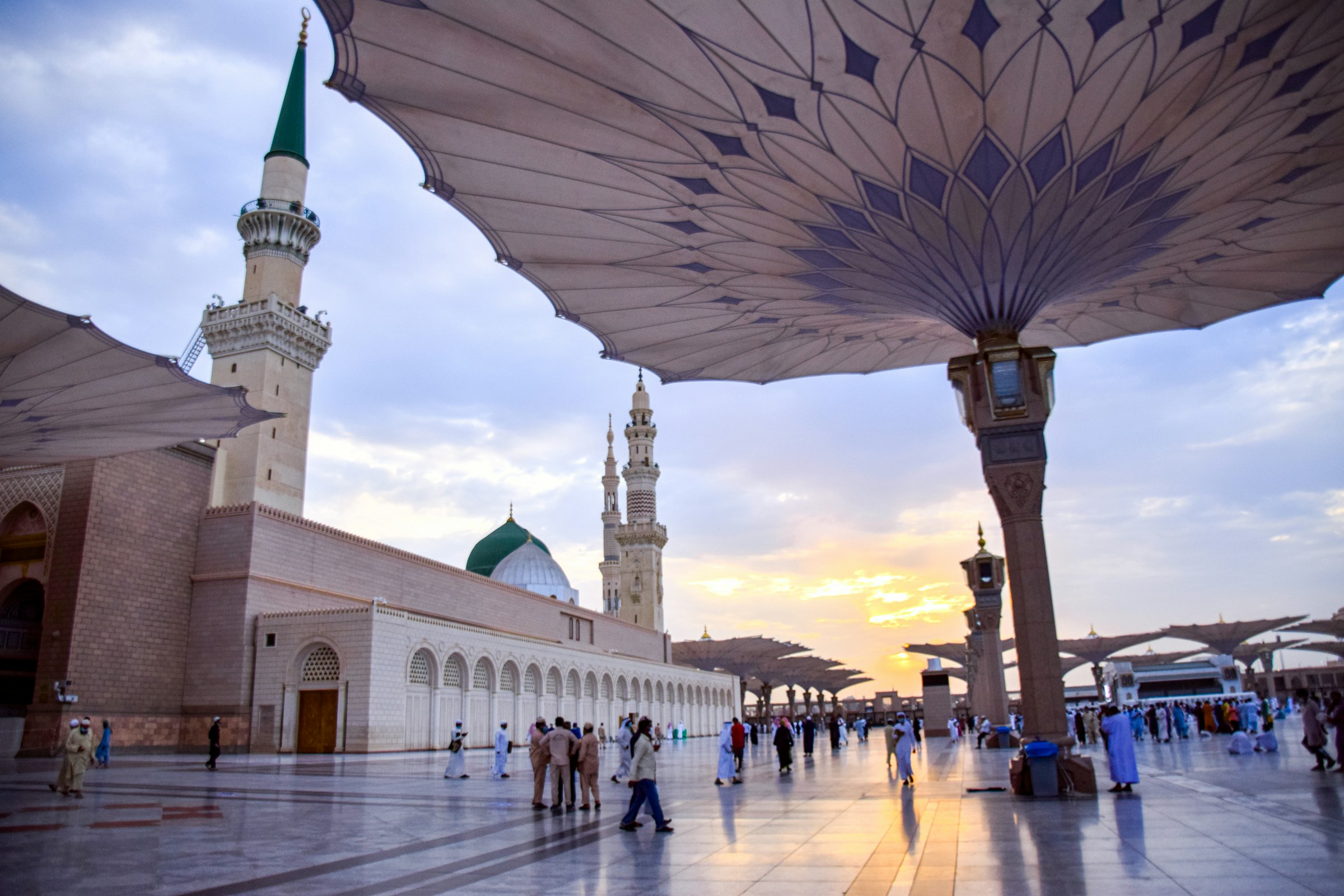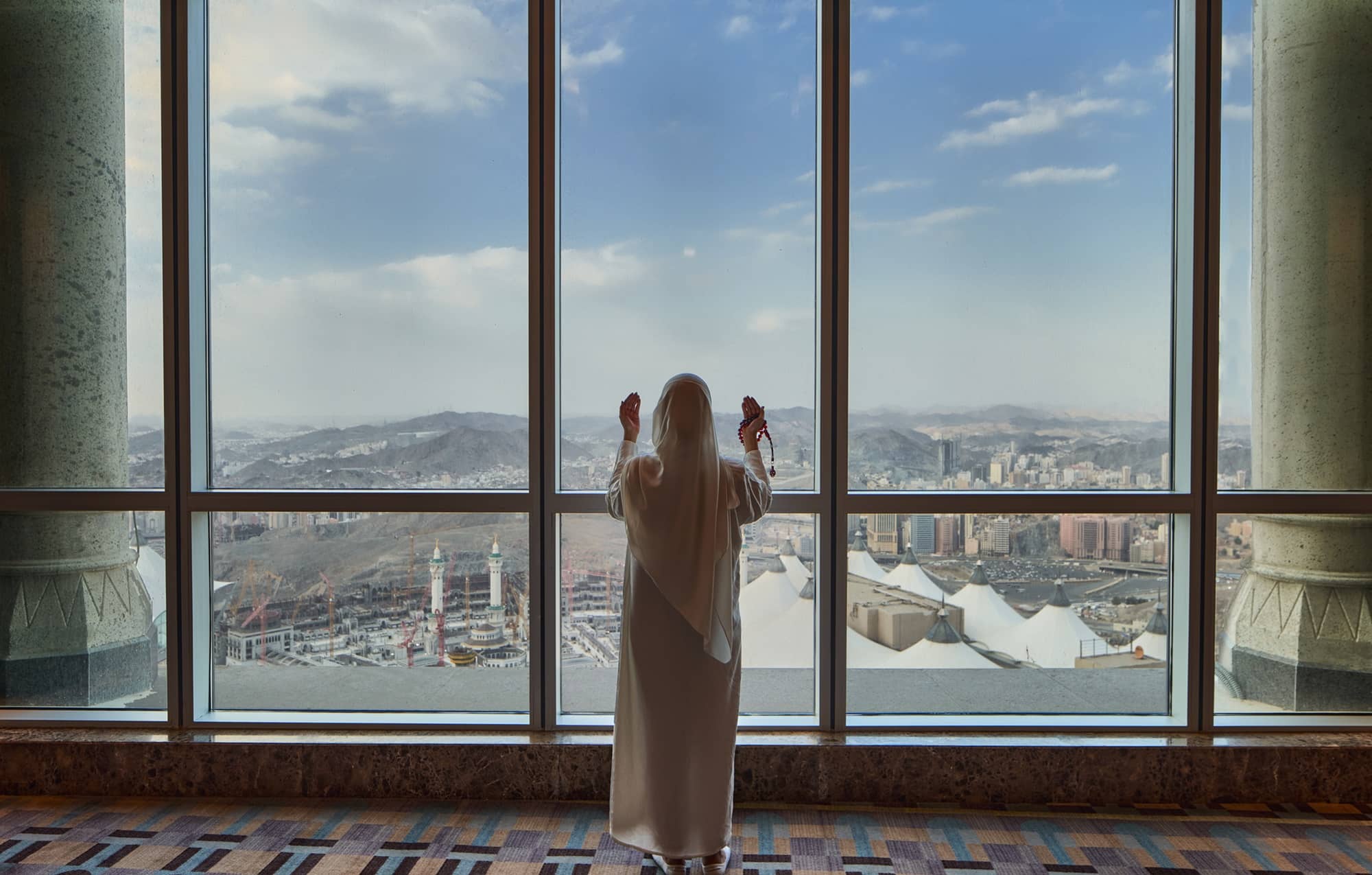دليلك لأداء مناسك العمرة
السلام عليكم ورحمة الله وبركاته!
بسم الله الرحمن الرحيم
السلام عليكم ورحمة الله وبركاته!
بسم الله الرحمن الرحيم
العمرة هي رحلة روحية جميلة يقوم بها كل مسلم ليعترف بالله (سبحانه وتعالى) باعتباره بشير السلام ويتواصل معه لتطهير نفسه من الذنوب. أي حاج يمضي في هذه الرحلة، يسلك طريق تطهير روحه وقلبه وعقله وجسده من الذنوب التي ارتكبها في الماضي ليتميز عن الآخرين يوم القيامة.
في الأساس، تعني العمرة “زيارة” الكعبة المشرفة (بيت الله الحرام) باللغة العربية ويمكن لأي شخص أن يؤديها في أي وقت من السنة؛ على عكس الحج، وهو حج إلزامي إلى مكة، يتم أداؤه كل عام خلال الأيام العشرة الأولى من شهر ذي الحجة الإسلامي.
الأعمال الإيمانية التي يؤديها جميع الحجاج أثناء رحلتهم الروحية إلى الكعبة المشرفة تُعرف مجتمعة باسم مناسك العمرة.
اعتماداً على ما إذا كان المرء يرغب في أداء الحج بعد بدء مناسك العمرة، فهناك نوعان من العمرة: العمرة المفردة (اختيارية قبل الحج) وعمرة التمتع (خلال أشهر الحج).
فيما يلي أربعة طقوس خلال العمرة المفردة تتضمن الوفاء ببعض الواجبات الدينية والطقوس، وكل منها يرسخ الحاج في مكانه الصحيح.
قبل أن يقوم المعتمر بدخول المسجد الحرام (الحدود المقدسة لمكة) والانتقال لأداء العمرة، يجب عليه ارتداء ملابس الإحرام عبر أحد المواقيت الخمسة المختلفة في حدود الحرم:
قبل زيارة الحرم الشريف، يجب على المعتمر البدء بالإحرام، وهو العمل المقدس المشترك بين النية والتلبية اللازمين لأداء العمرة. والنية هي النية الفطرية لأداء عبادة، والتلبية هي دعاء خاص يقال في الدعاء.
لكي يصبح المعتمر مُحرماً، يجب عليه أن يستعد للإحرام باتباع الخطوات التالية كما أوصى بها النبي صلى الله عليه وسلم:
الوضوء – تنظيف الجسم لبلوغ الطهارة الجسدية، ويتضمن بعض المناسك الواجبة (المستحبات) وغيرها، وهي مستحبة للإحرام:
بعد انتهاء المعتمر من إحرامه، يقوم بالطواف الواجب في المسجد الحرام، ويجب على المحرم أن يقطع التلبية ويبدأ الطواف حول الكعبة المشرفة سبع مرات (تذكيراً بالملائكة الذين يطوفون حول بيت الله المعمور)، وذلك بوضع قدمه اليمنى والاضطباع، ويجب على الرجل أن يكشف كتفه الأيمن بوضع الرداء تحت إبطه الأيمن وطرفيه على كتفه الأيسر أثناء الطواف كله.
يجب على المعتمر البدء بالطواف حول المسجد الحرام من الحجر الأسود وينتهي به، حيث يكون الطواف بنية خالصة للتقرب إلى الله. لا تصح العبادة إلا إذا قال الحاج الدعاء المقرر في كل شوط من أشواط الطواف السبعة.
ويجوز للحاج أن يقبّل الحجر الأسود إن استطاع أثناء الطواف، وإلا فيمسحه بيده اليمنى ويبدأ في التحرك لإكمال الأشواط السبعة عكس عقارب الساعة مع الدعاء والكعبة المشرفة عن يساره، دون انقطاع أو تشتيت.
في الأشواط الثلاثة الأولى يرمل الرجال فقط (والرَمَل هو مسارعة المشي مع تقارب الخطوات)، ويكمل الأربعة الباقية بالمشي (بسرعة عادية) بين الركن اليماني والحجر الأسود.
وينتهي الطواف الأخير من حيث بدأ الأول، لضمان إتمام الحاج للأشواط السبعة دون تحرك أو تأخر خطوة أو أكثر. وبالطواف السابع وثمانية استلامات تنتهي حالة الطواف، وفي هذه المرحلة يجب على الرجال تغطية أكتافهم بالجزء العلوي من ثوب الإحرام.
بعد الانتهاء من الطواف، يمكن للمعتمر الذهاب خلف مقام إبراهيم وأداء صلاة الطواف لأداء ركعتين قصيرتين ثم شرب ماء زمزم المقدس من بئر زمزم في قبو المسجد الحرام مع الدعاء إلى الله.
بعد شرب ماء زمزم، يتوجه المعتمر بعد ذلك إلى الملتزم، وهو جزء من الكعبة المشرفة بين الحجر الأسود وباب الكعبة، للدعاء إلى الله والدعاء.
يجب على المعتمرين الراغبين في السعي أن يخرجوا من المسجد الحرام إلى المسعى الذي يحيي ذكرى كفاح زوجة النبي إبراهيم السيدة هاجر للبحث عن الماء لابنها بين جبلي الصفا في الجنوب والمروة في الشمال. في الأساس، يعد السعي وسيلة رائعة لقضاء بعض الوقت في التأمل الذاتي وتحقيق الذات.
يبدأ المعتمر السعي بالصعود إلى جبل الصفا لرؤية الكعبة المشرفة من باب الصفا. يجب عليه التوجه إلى الكعبة بأقصى درجات الإخلاص والحب، مع رفع يديه للدعاء إلى الله. ثم ينزل المعتمر من الصفا ويمشي نحو جبل المروة وهو يردد دعاء سبحان الله ويستمر في السير حتى الوصول بين العلمين الأخضرين لا يمشي بينهما إلا الرجال والنساء حيث المشي يكون بخطوات متسارعة بشرط عدم مضايقة الغير، أما في بقية المسعى فإن المشي يكون عادياً، وعند الوصول إلى المروة يحمدون الله ويستقبلون الكعبة ويرددون الدعاء ويذكرون الله.
ويستمر السعي بالذهاب من الصفا إلى المروة والعودة إلى الصفا حتى يكمل سبعة أشواط في المجموع. ويبلغ طول كل شوط حوالي 450 متراً. وينتهي الشوط السابع عند المروة حيث يجب على جميع المعتمرين الوقوف تجاه الكعبة وتكرار نفس الأدعية التي قيلت على الصفا. لا يضطبع المعتمر أثناء السعي بل يكون إحرامه على كتفيه.
بعد أداء ركعتين من النفل (في وقت مرغوب) في المسجد الحرام، يخرج المعتمرين من المسجد الحرام وقدمهم اليسرى ممدودة ثم يدعو.
أخيراً، الخطوة الأخيرة من رحلة العمرة، وهي حلق الشعر أو قصه في مِنى. يجب على الرجال حلق رؤوسهم بالكامل أو قص شعرهم. بينما يُحظر على النساء حلق رؤوسهن ويُسمح لهن فقط بقص خصلة أو خصلة من شعرهن. يرمز فعل قص الشعر إلى انفصال المرء عن المظهر الجسدي والخضوع الكامل لله.
يتم رفع جميع المحظورات المفروضة على سلوك المعتمرين من قبل الإحرام، عند الانتهاء من هذه الطقوس الإلزامية الأخيرة. يمكنهم بعد ذلك خلع ملاءات الإحرام وتغيير ملابسهم العادية.
اكتشف بعضاً من أفضل الفنادق في مكة بالقرب من الحرم والتي تزخر بوسائل الراحة المثالية للحجاج والعائلات ومسافري الأعمال.
استمتع بمشروب مجاني لبدء كل إقامة.
قم بتسجيل الوصول بسهولة في مكتب الاستقبال المخصص للأعضاء.
يمكنك الإقامة في غرفتك حتى الساعة 4:00 مساءً، عند الطلب (وفقًا للتوافر




